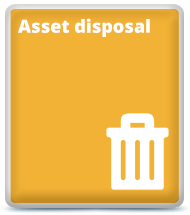Accounting
Revised Regs Simplify Asset Disposal for Small Businesses
Complying with the final tangible property regulations has just become easier for small businesses filing 2014 tax returns. The recently-issued Revenue Procedure 2015-20 will allow small business taxpayers to change methods of accounting under the ...
Mar. 09, 2015

Recent changes to tax regulations have made it easier for businesses to capture deductions associated with disposed assets such as HVAC units, roofing, lighting systems and other assets, according to the Capital Review Group, which specializes in asset taxation issues.
Complying with the final tangible property regulations has just become easier for small businesses filing 2014 tax returns. The recently-issued Revenue Procedure 2015-20 will allow small business taxpayers to change methods of accounting under the tangible property regulations for 2014 without having to file a Form 3115. Small businesses are defined as those with either $10 million or less in assets or $10 million or less in annual revenue. Per this definition, some larger businesses may also qualify for the simplified procedure, such as those that have revenue greater than $10 million but less than $10 million in assets.
Previously, taxpayers were required to file a Form 3115 for each automatic change request, which made compliance with the tangible property regulations cumbersome for small businesses and their tax preparers. The new procedure is available on a prospective basis for the 2014 tax year.
The tangible property regulations detailed in §263(a) grant business taxpayers with tangible property, such as buildings or equipment, the opportunity to expense items capitalized as improvements in prior years. This enables businesses to claim deductions and capture losses for disposed assets that were not claimed previously. By claiming these additional deductions and losses as permitted by the latest tangible property regulations, taxpayers may significantly bolster their bottom lines through hundreds of thousands of dollars in tax savings.
For example, consider this $2,000,000 manufacturing facility: the building entered service in July 2001 and the owners replaced ten 40-ton roof top units at an approximate original cost of $250,000. The units had an annual depreciation of $6410, and as 39 year assets, have 25 years of remaining depreciation as of 2015. At a rate of $6410 per the building owner may be able to claim a total of approximately $160,250 in depreciation balance in 2015.
As another example, the owners of an office building will realize similar savings based on their replacement of metal casement windows. The $1,500,000 building entered service in January 2005. The total cost of the new windows was $21,000 in 2005 (100 windows at $210 each), and as 39 year assets, they had an annual depreciation of $538. In 2015, with 29 years of depreciation remaining, the building owners may be able to take approximately $15,602 in depreciation balance (29 years x $538 per year).
Businesses may achieve significant tax savings even for replacing one asset. For instance, a $1,750,000 medical office building that entered service in April 2007 replaced a single elevator for $31,000. The elevator was also a 39 year asset with annual depreciation of $1069. In 2015, with 31 years of depreciation remaining, the building owners may be able to claim approximately $33,138 in depreciation balance (31 years x $1069 per year).
In light of Rev. Proc. 2015-20, now is the time for taxpayers, particularly small businesses, to seize the substantial savings that are possible by complying with the tangible property regulations. The regulations are complex, and assistance from a qualified tax firm will help taxpayers navigate them and optimize financial gain.
